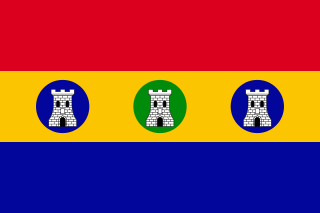
Hadhramaut is a geographic region in South Arabia, comprising eastern Yemen, parts of western Oman and southern Saudi Arabia. The name is of ancient origin, and is retained in the name of the Yemeni Governorate of Hadhramaut. The people of Hadhramaut are called Hadarem. They formerly spoke Hadramautic, an old South Arabian language, but they now predominantly speak Hadhrami Arabic.

Seiyun is a city in the region and Governorate of Hadhramaut in Yemen. It is located in the middle of the Hadhramaut Valley, about 360 km (220 mi) from Mukalla, the capital of Mukalla District and the largest city in the area, via western route. It is also 12 km (7.5 mi) away from Shibam and 35 km (22 mi) away from Tarim, other large cities in the valley.

The majority of the Arabs in Singapore are Hadharem and traced their ancestry to the southern Arabian Peninsula in Hadramaut, Yemen. The valley region was part of a confederacy once ruled by the Queen of Sheba. Hadramaut was mentioned in The Old Testament. Its fertile areas, suitable for cultivation, had beguiled ancient Romans to call it Arabia Felix.

Mukalla is a seaport and the capital city of Yemen's largest governorate, Hadhramaut. The city is in the southern part of the Arabian Peninsula on the Gulf of Aden, on the shores of the Arabian Sea, about 480 kilometres east of Aden. It is the most important port city in the Hadhramaut region. It is also the sixth-largest city in Yemen, with a population of approximately 595,000 as of 2023. The city is served by the nearby Riyan International Airport.

Qu'aiti, or the Qu'aiti Sultanate of Shihr and Mukalla, was a sultanate in the Hadhramaut region of the southern Arabian Peninsula, in what is now Yemen. Its capital was Mukalla, and it was divided into six provinces including Al-Mukalla, Ash-Shihr, Shibam, Du'an, the Western Province and Hajr. Apart from Al-Mukalla, Ash-Shihr and Shibam were the Sultanate's major cities.

Kathiri, officially the Hadhrami Kathiri Dynasty in Seiyun or the Sultanate of Seiyun, was a sultanate in the Hadhramaut region of the southern Arabian Peninsula, in what is now part of Yemen and the Dhofari region of Oman.

The Protectorate of South Arabia consisted of various states located at the southern end of the Arabian Peninsula under treaties of protection with Britain. The area of the former protectorate became part of South Yemen after the Aden Emergency and is now part of the Republic of Yemen.

The Mahra Sultanate, known in its later years as the Mahra State of Qishn and Socotra or sometimes the Mahra Sultanate of Ghayda and Socotra was a sultanate that included the historical region of Mahra and the Guardafui Channel island of Socotra in what is now eastern Yemen. It was ruled by the Banu Afrar dynasty for most of its history.

Al-Shihr, also known as ash-Shir or simply Shihr, is a coastal town in Hadhramaut, eastern Yemen.

The Habbani Jews are a culturally distinct Jewish population group from the Habban region in eastern Yemen, a subset of the larger ethnic group of Yemenite Jews. The city of Habban had a Jewish community of 450 in 1947, which was considered to possibly be the remains of a larger community which lived independently in the region before its decline in the 6th century. The Jewish community of Habban disappeared from the map of the Hadramaut, in southeast Yemen, with the emigration of all of its members to Israel in the 1950s.

The history of the Jews in the territory of modern Saudi Arabia begins in Biblical times, at least as early as Solomon's Temple.

The Hadharem or the Hadhrami are an Arab sub-ethnic group indigenous to the Hadhramaut region in South Arabia, which is part of modern-day eastern Yemen. They speak Hadhrami Arabic. Among the two million inhabitants of Hadhramaut, there are about 1,300 distinct tribes.

Sultan Ghalib II bin Awadh al-Qu'aiti al-Hadhrami is the former sultan of the Qu'aiti State or Qu'aiti Sultanate, in modern Yemen, and the current head of the Al-Qu'aiti household. The once ruling Qu’aiti dynasty of Hadramaut was Yafa’i in origin. He reigned from 10 October 1966 until the monarchy was ousted by communists on 17 September 1967.
On 15 May 2016, a suicide bombing in the southern Yemeni port city of Mukalla, the capital of the Hadhramaut province, killed at least 47 police and injured over 60. The bombing was preceded by an attack, where 15 Yemeni troops were killed in attacks on army positions outside Mukalla. ISIL said, one of its militants blew up a vehicle, packed with explosives, in an army base in the Khalf district at the city's eastern outskirts.
The Hadramaut insurgency was an insurgency in Yemen launched by AQAP and ISIL-YP against forces loyal to president Abdrabbuh Mansur Hadi.

The Hadhramaut Tribal Alliance, also known as the Tribal Alliance of Hadramout or the Hadhramaut Tribes Alliance, is an armed group involved in the ongoing Yemeni Civil War. The Alliance's forces are primarily drawn from the Hadhrami people in southern Yemen. During the civil war, the Alliance is often cited as supporting the government of Yemeni President Abdrabbuh Mansur Hadi and is noted for operating alongside the Republic of Yemen Armed Forces in Hadhramaut.

Tarim is a historic town situated in Wadi Hadhramaut, Yemen. It is widely acknowledged as the theological, juridical, and academic center of the Hadhramaut Valley. An important focus of Islamic learning, it is estimated to contain the highest concentration of descendants of the Islamic Prophet Muhammad known as the Sadah anywhere in the world. The city is distinguished for producing numerous Islamic scholars, including Imam al-Haddad. Additionally, Tarim is also home to Dar al-Mustafa, a well-known educational institute for the study of traditional Islamic Sciences.

Hadramout region, is the largest of the six Federal Regions of Yemen that is expected to be activated in the next constitution, to be a federal autonomous region in eastern Yemen. The Hadramout region includes four Yemeni “Wilayat” or States, which are Hadramout, Al-Mahrah, Shabwah and Socotra, with its capital being the city of Al-Mukalla. Some of the people of Al-Mahrah governorate reject the decision of mixing them with the Hadramout region and demand the establishment of a region of their own.
Karama Mursal was a Yemeni singer born in Al-Mukalla, the capital of Hadhramaut Governorate, located in southeastern Yemen. He began his artistic career in the 1960s, precisely in 1963, at the age of seventeen, singing the works of many Hadhrami poets, notably the Hadhrami poet Hussein Abu Bakr Al-Mihdhar, who played a significant role in the success of his songs. He also sang poems by Omar Abu Bakr Al-Aidarus, Ahmed Salim Al-Bayd, Ahmed Salim Bamatraf, Jam'an Bamatraf, Junaid Bawazeer, and Abbas Al-Dilmi.
The Hadhrami Elite Forces are forces formed by the Arab coalition forces, under the supervision of the United Arab Emirates, with funding from Saudi Arabia, and technical support from the United States, to liberate the city of Mukalla from al-Qaeda.
















